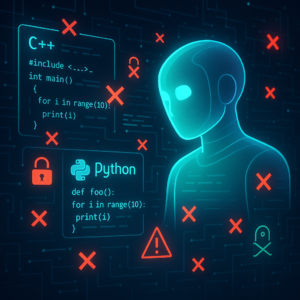Revolutionizing Public Transit with AI: How Language Models Could Redefine Urban Mobility in San Antonio

Revolutionizing Public Transit with AI: How Language Models Could Redefine Urban Mobility in San Antonio
San Antonio, Texas, isn’t just famous for its rich history and vibrant culture—it’s also becoming a case study for cutting-edge advancements in public transportation. The city’s rapid growth has sparked interest in innovative solutions to improve transit systems. But how exactly can artificial intelligence (AI), specifically large language models (LLMs), transform the way we commute? A groundbreaking study examines this very question and offers some exciting insights.
Welcome to the Future of Public Transit
Imagine a public transit system that not only knows when you’ll arrive at your destination but also anticipates your every need along the way. This is the transformative potential of leveraging AI technologies, like LLMs, in public transportation. The study in question delves into how these models can optimize everything from route planning to passenger communication, using San Antonio as a testing ground.
LLMs, like OpenAI’s GPT-4, can process and analyze vast data sets while understanding natural language as humans do. These capabilities make them ideal for enhancing public transit systems struggling with fluctuating passenger demands, inefficient routes, and resource management. The study explores how LLMs can help San Antonio address these challenges and set an example for other urban areas to follow.
The Core Capabilities of LLMs in Public Transport
Optimizing Route Planning and Scheduling
Think of route planning in public transit like a complex game of chess. You have multiple buses or trains, hundreds of stops, and thousands of passengers—all needing to align perfectly to avoid delays. By utilizing historical and real-time data, LLMs can help transit systems like San Antonio’s to plan routes more efficiently. Imagine shaving minutes off your commutes by avoiding low-demand areas or adjusting for unexpected road closures—a dream that’s fast becoming a reality.
Real-time Passenger Communication
As anyone who’s ever missed a connecting bus knows, real-time updates can be a lifesaver. Here, LLMs could revolutionize how passengers receive information. By integrating these models, transit systems can provide more accurate and tailored travel updates. Whether it’s a tweet, a text message, or a voice announcement, LLMs can craft personalized messages that keep passengers informed and happy.
Boosting Operational Efficiency
Managing public transit is all about balancing the right resources at the right place and time. LLMs have the potential to optimize everything from the number of buses on the road to driver assignments, thus enhancing overall efficiency. This means fewer delays, less overcrowding, and more reliable services—a win-win for both passengers and transit authorities.
The Nuts and Bolts: Experimenting with LLMs in San Antonio
The researchers conducted a series of experiments aimed at measuring the performance of LLMs, focusing specifically on their abilities in understanding public transportation lexicon and retrieving relevant information. With 3275 multiple-choice questions and 80 short-answer questions based on San Antonio’s public transit data, these experiments tested the waters for how well LLMs can interpret and respond to transit-related queries.
Experiment Highlights
-
Understanding Task: LLMs were evaluated on their ability to comprehend transportation-related information without any additional context. Here, discrepancies were noted, such as difficulty in distinguishing between semantically similar categories like “Rail” and “Light Rail.”
-
Information Retrieval Task: The models were tasked with finding specific information within given datasets. While LLMs excelled in simpler queries, their performance dropped when faced with complex data integration.
Addressing the Challenges: Fine-tuning for Success
Despite the promising results, the study highlights significant challenges that need attention. For instance, LLMs showed limitations in handling ambiguous questions and integrating complex datasets. Moreover, the models occasionally produced inconsistent answers, influenced by factors like query phrasing or the context of previous interactions.
Future research is expected to tackle these issues head-on, especially focusing on improving how LLMs manage semantic similarities and enhancing their capabilities for complex data tasks. Moreover, ethical considerations, such as data privacy and fairness, are crucial steps before these models can fully integrate into public systems.
Practical Implications: Real-world Applications
The findings from San Antonio could serve as a blueprint for integrating AI into public transportation systems globally. Beyond just improving service, the technology opens the door to more inclusive transit practices by providing multilingual support for diverse urban populations. As cities worldwide grapple with urbanization challenges, these AI-driven insights can inform smarter, more adaptive transit solutions.
Key Takeaways
-
LLMs offer exciting potential to revolutionize public transportation by improving route planning, passenger communications, and operational efficiency.
-
San Antonio’s case study provides a framework that other cities can adapt as they seek to modernize transit systems.
-
Challenges remain, including handling complex data sets and ensuring ethical use, but with focused research and development, LLMs could play a seminal role in the future of public transport.
-
Active efforts in fine-tuning and refining prompt engineering can mitigate inconsistencies and further optimize these models for specific applications.
In summary, LLMs stand on the cusp of transforming public transportation as we know it. With ongoing research and careful implementation, these models can create smarter, more efficient public transit systems—not just in San Antonio but around the world. So, the next time you hop on a bus, it might just be your friendly neighborhood AI ensuring a smoother journey.
Let’s keep our fingers crossed for a more connected, efficient, and AI-supported future on the road!
If you are looking to improve your prompting skills and haven’t already, check out our free Advanced Prompt Engineering course.
This blog post is based on the research article “Exploring the Potential of Large Language Models in Public Transportation: San Antonio Case Study” by Authors: Ramya Jonnala, Gongbo Liang, Jeong Yang, Izzat Alsmadi. You can find the original article here.




